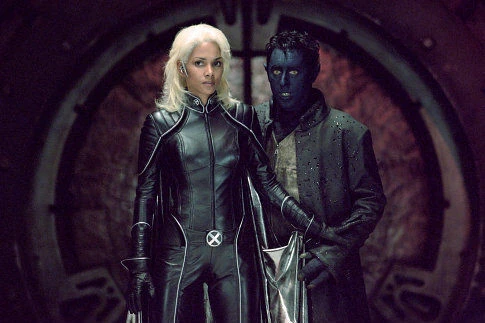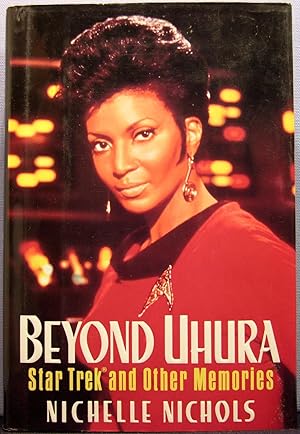 However, with X-Men 2, I was pleasantly surprised. It seems to be based off an earlier script than what was used for the movie, although for the most part, the variances are minor. I suppose it helps that Chris Claremont, who is pretty well-known for his work on The Uncanny X-Men, was the writer. There seems to be a decent grasp on characterization, at least to my understanding of the way they are written in the movie. (While I have read some of the comics, in this case, I think it's best to look at how they were portrayed onscreen) I actually felt that Jean Grey was greatly enhanced from her movie portrayal, since her internal monologue allowed for a much better look at what was going on in her head.
However, with X-Men 2, I was pleasantly surprised. It seems to be based off an earlier script than what was used for the movie, although for the most part, the variances are minor. I suppose it helps that Chris Claremont, who is pretty well-known for his work on The Uncanny X-Men, was the writer. There seems to be a decent grasp on characterization, at least to my understanding of the way they are written in the movie. (While I have read some of the comics, in this case, I think it's best to look at how they were portrayed onscreen) I actually felt that Jean Grey was greatly enhanced from her movie portrayal, since her internal monologue allowed for a much better look at what was going on in her head.And of course, more attention was given to Nightcrawler and Storm, again, largely because the point of view switching and use of internal monologues in places helped bring them a little more focus compared to what they might have gotten in the movie if you weren't paying attention to them already. An example might be the scene in which Kurt begins his introduction just before he and Storm go into Dark Cerebro. While I had thought introducing himself that way was an ingrained habit, the book offers the interpretation that it's an attempt to diffuse the situation due to being flustered and overwhelmed by the request to teleport, as well as the tension between everyone. It may not have been my first interpretation, but I found it to be a valid one that could match with the way he's portrayed in the movie.
 While shipping and subtext are sometimes an issue with any X-Men series, I found that the novelization offered a surprisingly nuanced portrayal of the relationships between characters. The Cyclops/Jean Gray/Logan love triangle has always been a bit of a low point for me in the original trilogy (though ironically, the first two films are my favorites in the series). However, because of Jean Gray's extended internal monologue, as well as Logan's, add a lot more to the whole debacle besides just "I flirted with the bad guy and took home the good guy." It even goes as far as to tie in that triangle with the interesting little mess of Rogue/Logan/Jean Gray, with a lovely nonverbal moment in which Logan comes to a greater understanding of Rogue. I thought this was nice, since a lot of times, the central love triangle took up so much attention in the films that we didn't get enough time to look at the other relationships in the series, such as Rogue's implicitly one-sided crush on Logan, Rogue with Bobby, or, of course, Kurt and Storm. These two especially get more than a few good moments, whether flirting out loud, Storm coming to a realization that Kurt is flirting with her, or simple nonverbal gestures between them. My personal favorite at this time would have to be just after the attack by Jason Stryker through Dark Cerebro. Nothing is said between them, but the way in which they comfort each other before quickly moving on to check on the children is absolutely beautiful.
While shipping and subtext are sometimes an issue with any X-Men series, I found that the novelization offered a surprisingly nuanced portrayal of the relationships between characters. The Cyclops/Jean Gray/Logan love triangle has always been a bit of a low point for me in the original trilogy (though ironically, the first two films are my favorites in the series). However, because of Jean Gray's extended internal monologue, as well as Logan's, add a lot more to the whole debacle besides just "I flirted with the bad guy and took home the good guy." It even goes as far as to tie in that triangle with the interesting little mess of Rogue/Logan/Jean Gray, with a lovely nonverbal moment in which Logan comes to a greater understanding of Rogue. I thought this was nice, since a lot of times, the central love triangle took up so much attention in the films that we didn't get enough time to look at the other relationships in the series, such as Rogue's implicitly one-sided crush on Logan, Rogue with Bobby, or, of course, Kurt and Storm. These two especially get more than a few good moments, whether flirting out loud, Storm coming to a realization that Kurt is flirting with her, or simple nonverbal gestures between them. My personal favorite at this time would have to be just after the attack by Jason Stryker through Dark Cerebro. Nothing is said between them, but the way in which they comfort each other before quickly moving on to check on the children is absolutely beautiful.The biggest difference between the novelization and the film, the main reason I think it might have been based off an earlier script, the reason which you may have heard of this book before now, is because of the ending. A character who sacrifices herself in the movie opts for a different method of rescue in the book. While I was hoping for the book to provide some insight into why she thought it was "the only way," I think it makes a little more sense in the book, where not only did she break her leg fighting off a brainwashed Scott Summers (Cyclops), but she was also blinded by the backlash from Dark Cerebro, and had to rely completely on her telepathy to see what was going on through others' eyes. Without any visibility, she might not have been able to get out of the jet to sacrifice herself as in the movie. Although I would have liked to have seen her reasoning behind the movie's "It's the only way," I appreciated the alternative solution.
Finally, I was a little concerned by the name "Chris Claremont," since, although I respect his work on Uncanny X-Men and think that for the most part, he did a remarkable job, I also know that when you get used to working on one medium and then transfer to another, it can sometimes be difficult to reshape your writing to fit the new style. (Imagine Sir Arthur Conan Doyle trying to write a comic, as a purely hypothetical example) But I was again, pleasantly surprised. The work actually reads fairly easily. My one complaint would be the length of the penultimate chapter, as I don't recall a single chapter break from Mystique's infiltration until after the final escape from Alkali Lake. It's understandable, considering a lot happens there, but I thought it might have been wiser to put a chapter break immediately after the first time Dark Cerebro is shut off, picking up as everyone begins recovering from the effects. It's not a major complaint for me, since I've never had a problem putting a book down and picking it back up wherever and whenever I wanted, but it might make it a bit of a slog for readers with different habits.
Nevertheless, if you enjoy the X-Men, or are simply curious as to what might have been in the movie series, would like focus on something besides Logan/Jean/Cyclops, or you simply agree that there isn't enough Nightcrawler in the X-films at this point, I would highly recommend Chris Claremont's X-Men 2: The Novel.
So please, enjoy, and I'll see you on the next shelf.




